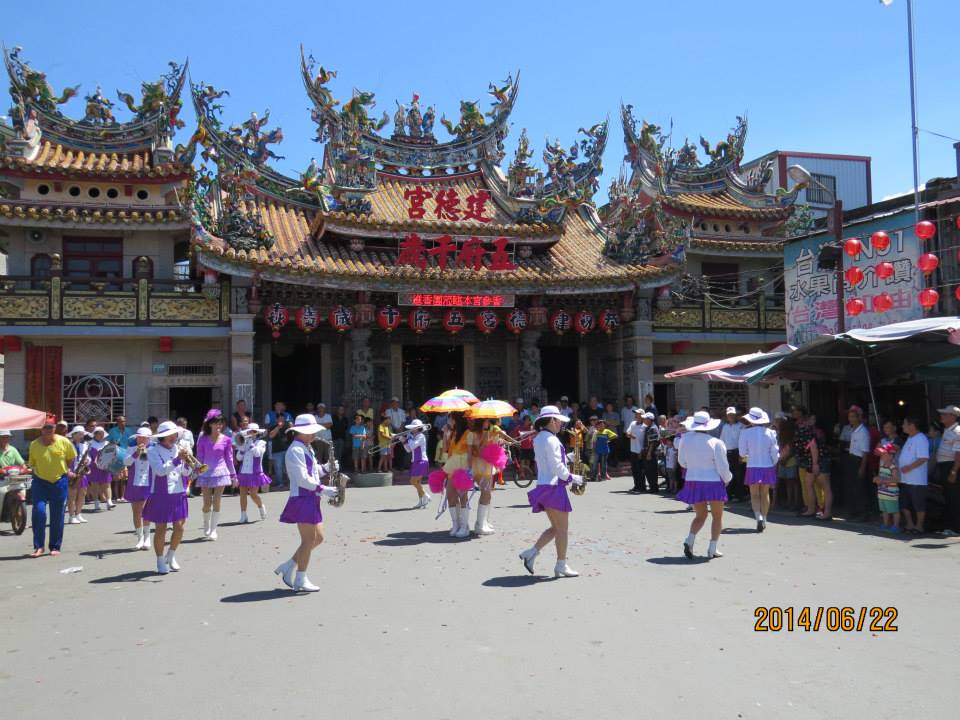[Budai-Guogou]
Guogou Church (過溝福音中心) is at the junction of Guogou (過溝) and Chestnut Lun (栗子崙). Her out-reach area covers Budai-Guogou township (布袋過溝), Xilun Village (西崙村) and Wen-Tsai Village (塭仔村) of Donshih township. In fact, Guogou is a large community including three sub-villages and is under the administration of Budai Township (布袋鎮), Chiayi County (嘉義縣). Historically, the life style in the area is simple farming and fishing. In recent years, there is a slight change in population structure. The percentages of elderly and children are getting higher. The lost of middle-aged population became more serious in years which forces the grandparents to take the responsibilities of raising the children. Furthermore, in the economic activities, the fish farming is higher than before, especially shrimp and eel farming. The main reason is profit, but the profit decreases as the steady growth of fish farming in others areas of Taiwan and the threat of virus infection.
[Statistics]
Budai TownshipEducation: 84.7%, Middle School and below; College and above 9.4%
Area: 59.8 square kilometers; population density: 558 persons / km
Number of Sub-Villages (村) and Li (里): 23
- Budai (Guogou) area, a total of three villages – populations 1,963 in Zhong An (中安里), 1,583 in Xi’an (西安里), 1,838 in Dongan (東安里); Sub-total — 5,384 people (2007 June data)
- Donshih Township, Xilun (西崙村) – population 1,424 (2007 June data)
- Donshih Township, Wen-Tsai (塭仔村)– population 1,234 (2007 June data)
Total Population: 8,042 people
Number of Factories: 58
Number of Hospitals: 11
Products: salt, fish, dried radish, chrysanthemum (茼蒿菜)
** Guogou Chrysanthemum seed production ranks first in Taiwan; Nay-Tien dried radish (內田菜脯) production accounts for about 80% in Taiwan.
[Economics]
Oyster harvesting (剖蚵): It is a rather common economic activity in this region. Usually at three in the morning, when it is still dark, you can see the villagers opening oyster shells under the fluorescent light. The reason of this popular activity is the proximity to the oyster farming areas of Donshih and Budai along the coast. According to villagers, the wage of opening the oyster shell is NT $20 per Taiwan kg (台斤). In good time, the villagers can process 20 kg which amounts to NT $ 500, a really hard work.
Oyster-shell 蚵殼: Oyster harvesting supplements the family income of the villagers. In the narrow lanes everywhere, there are piles of oyster-shells. Do not think it is worthless garbage. It’s like baits, when you attach the shells on a vinyl rope, string a few ropes together and place into the sea, after a while there are fresh oysters attached to the shells. Like a snail shedding and replacing its shell, it is a kind of endless recycling of the resources! Furthermore, it is a material for the arts! Have you heard about the shell arts (貝殼藝術)?
[Religion]
Most representative temple in Guogou is “Jiande Palace” (建德宮) which is dedicated to the Lee’s House Prince (李府千歲). Its construction can be traced back to the late Ton-Tse era in Ching dynasty (清同治末年). The naming of “Jiande Palace” means to get rewards from the hard working. Temple square is the main place of villagers’ gathering for activities, leisure time on weekdays, and morning and evening markets. During the deity’s birthday, it will be even more crowded.
[Schools]
- Guogou Middle School — Phone: (05) 3451005
- Longgang Elementary School — Tel: (05) 3451070
- Guogou Elementary School — Tel: (05) 3451010
